When selecting LED lighting fixtures or designing LED lighting solutions, many people often encounter a confusing issue: what is the difference between “lumens” listed on the packaging and “lux” in design specifications?
In fact, while both lumens and lux are related to “brightness,” they focus on entirely different aspects: lumens measure how much light a fixture emits, while lux measures how much light a surface receives.
Some people mistakenly believe that the higher the lumens, the brighter the light, while others mistakenly treat lux as a fixed parameter of the fixture. These misunderstandings often lead to selection errors, resulting in insufficient illuminance or energy waste. Therefore, in practical applications, lumens and lux are not interchangeable concepts; instead, they must be considered together to accurately determine whether a light fixture meets lighting requirements.
This article will guide you through the definitions and differences between lumens and lux, illustrate their measurement methods and application scenarios with real-world examples, and help you select the most appropriate metrics to evaluate and configure LED lighting fixtures based on different project needs.
Basic Concept Interpretation
What are lumens?
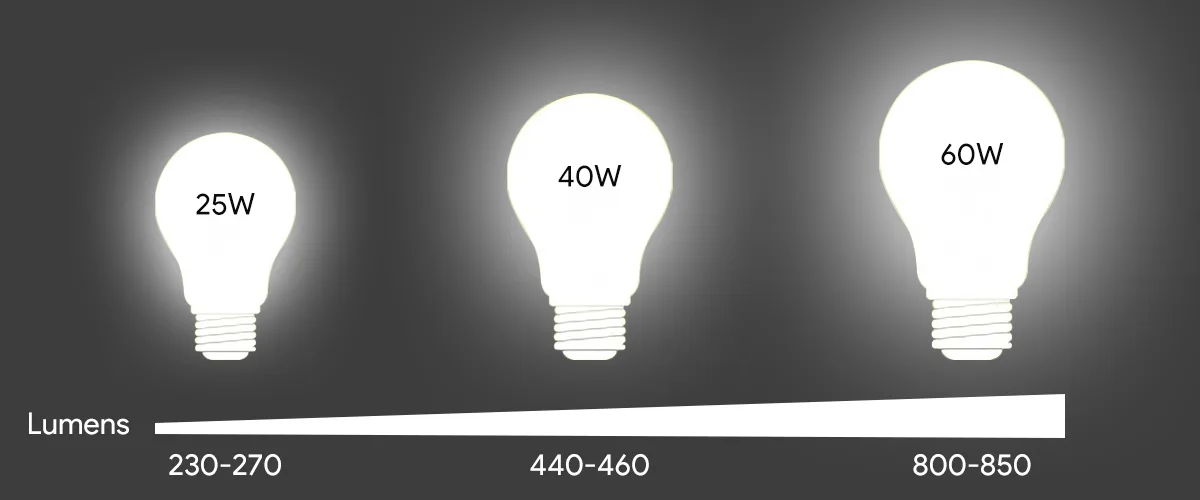
Lumens represent the total light output of a light source in all directions, or how much light a lamp can “release.” Therefore, when understanding lighting parameters, lumens are often the most intuitive and common indicator.
For example, an LED bulb labeled as 800 lumens means it can provide light output equivalent to a traditional 60-watt incandescent bulb. This value helps us quickly compare the brightness of different products when purchasing lighting fixtures, as lumens are an inherent property of the light source itself and are independent of the installation environment.
Lumens are better suited for measuring the potential output of a light source, but they cannot directly indicate the effect of light in an actual environment. In other words, even if two lights have the same lumens value, their visual brightness may be completely different in different spaces or with different installation methods.
Related Reading:
Understanding the Difference Between Kelvins and Lumens
How Many Lumens Do I Need for My Space?
What is lux?
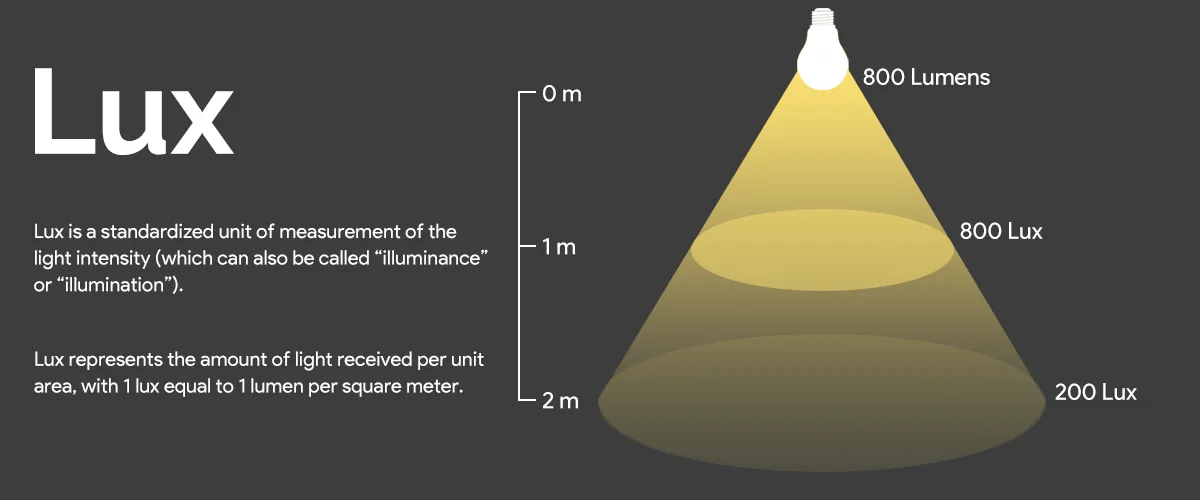
Lux represents the amount of light received per unit area, with 1 lux equal to 1 lumen per square meter. Lux is a key indicator for assessing lighting quality because what ultimately determines the human eye’s experience is not how much light the fixture emits, but the intensity of that light when it actually reaches our activity area. In contrast, Lux (lux) is more closely aligned with the user’s actual experience.
Lux does not measure the light source itself but rather how much light is actually illuminating a surface—such as a desk, kitchen countertop, or display case. Lux can be understood as the result of lumens being distributed over a certain area, making it a more intuitive measure of whether a space is sufficiently bright.
More importantly, lux has a direct relationship with distance. The closer the light source is to the surface, the more concentrated the light intensity per unit area, resulting in a higher lux value; conversely, when the light source is farther away, the same lumens are distributed over a larger area, leading to a significant decrease in lux values.
This is easily observable in real-world examples: a 1,000-lumen light placed 1 meter away from a desk may achieve several hundred lux, but if installed on a ceiling 3–4 meters high, the illuminance on the desk would sharply decrease.
Differences between lumens and lux
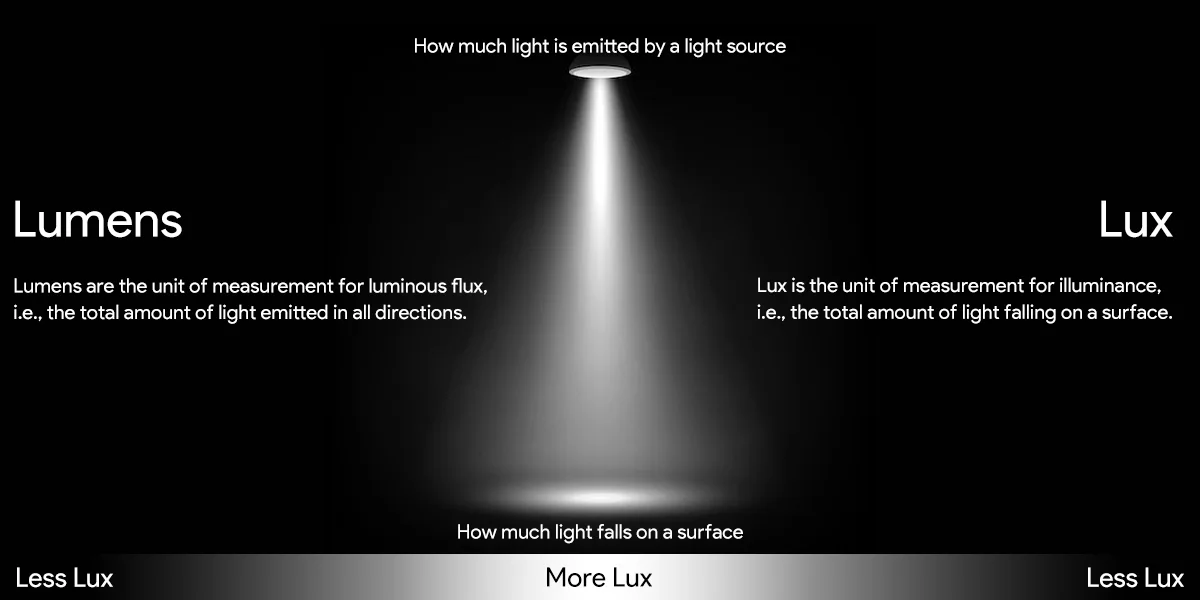
The core differences between lumens and lux can be summarized as follows:
- Lumens are the unit of measurement for luminous flux, i.e., the total amount of light emitted in all directions.
- Lux is the unit of measurement for illuminance, i.e., the total amount of light falling on a surface.
Lumens are always constant, but lux varies with distance and the size of the space. For this reason, one cannot determine whether a space is sufficiently lit by looking at the lumens of the light fixture alone; one must also consider lux for evaluation.
From these two definitions, it is clear that lumens and lux are not mutually exclusive concepts but describe light from different perspectives. The former tells us how much light a light source can emit, while the latter tells us how much light the human eye can perceive in a specific environment. Only by combining both can we scientifically determine whether a light fixture is truly suitable for a particular application scenario.
The Difference and Connection Between Lumens and Lux
In the previous section, we introduced the definitions and core differences between lumens and lux, but in practical applications, they are often confused. The fundamental difference lies in the fact that lumens focus on the total output of the LED light source itself, while lux focuses on how this light is distributed across a specific space or surface.
You can think of lumens as the “flow rate of a faucet,” while lux is the “thickness of the water layer formed when the water hits the ground.” The same flow rate will result in deep water if it falls into a small container but will appear thin if it spreads over a large area.
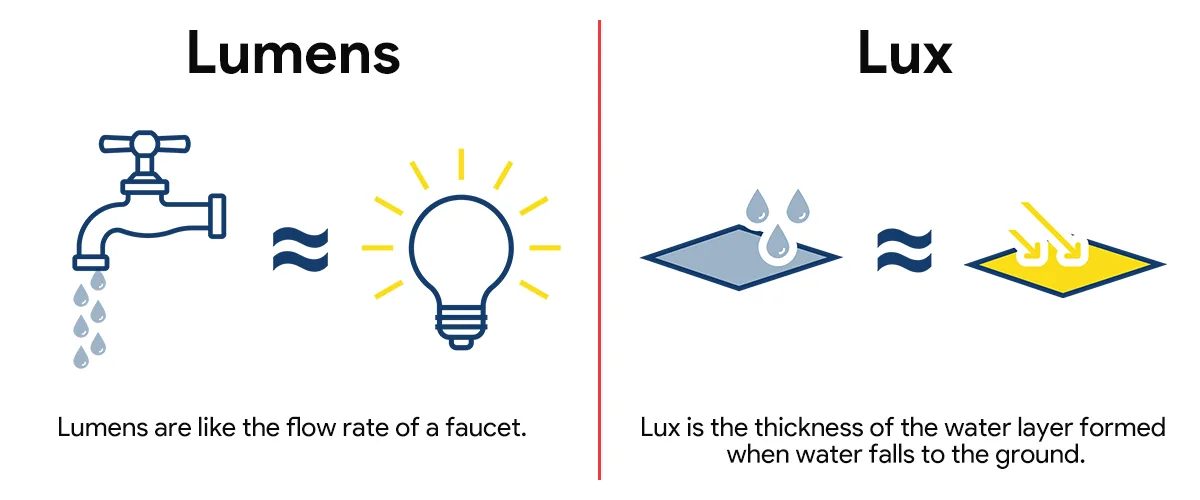
Similarly, even if a light has a high lumens rating, if it is installed on a very high ceiling or has a wide light distribution range, the lux on the work area may still be insufficient.
This distinction can also be expressed intuitively with a formula:
Lux = Lumens/Area
In other words, illuminance (lux) equals the total light output (lumens) of the light source divided by the area being illuminated. This also explains why the same light fixture can feel very different in different environments. For example, a light fixture rated at 1,000 lumens may feel very bright in a small room but dim in a large hall. This is not because the lumens value of the light bulb has changed, but because the lux value decreases as the area increases.
On the other hand, lux is also closely related to the distance between the light source and the target surface. As the distance increases, the light spreads more widely, so the amount of light received per unit area decreases, and the lux value decreases. However, lumens remain constant because the total amount of light emitted by the light source has not changed. Lumens determine the “potential” of the light, while lux determines its “performance” in actual environments.
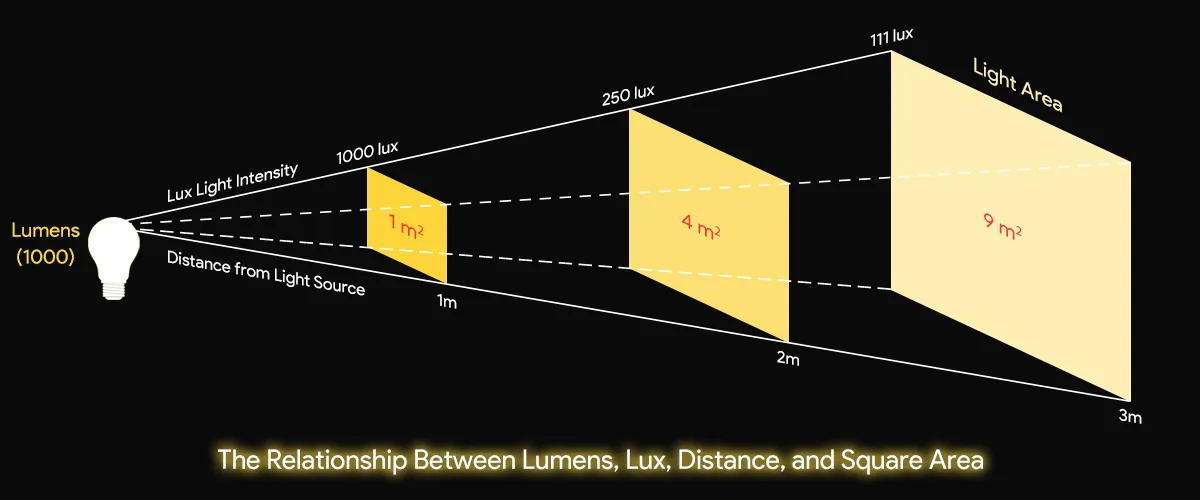
As such, lumens and lux are not isolated but complementary concepts. Lumens help us understand the light output capability of LED fixtures from the supply side, while lux allows us to assess the actual lighting effects in the environment from the demand side.
If we only consider lumens, we may feel that the lighting is insufficient in large spaces; if we only consider lux while ignoring the LED fixture’s inherent output capability, we may underestimate the fixture’s suitability for the space during selection. Therefore, in actual lighting design and LED fixture selection, these two metrics must be used in conjunction to achieve a comprehensive and accurate assessment.
When Should You Use Lumens? When Should You Focus on Lux?
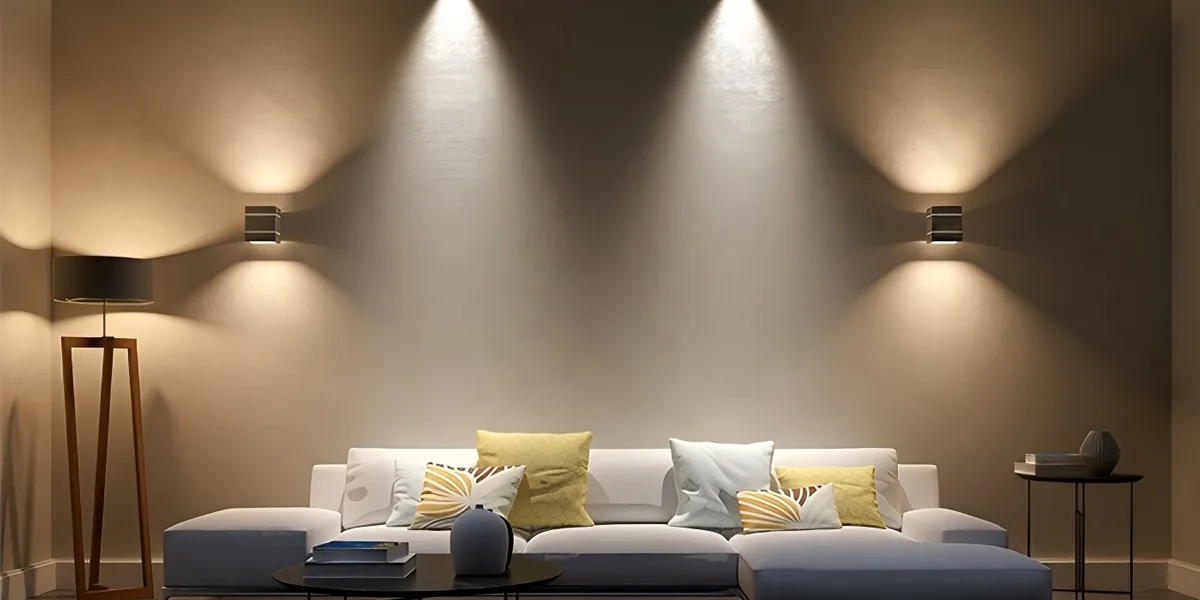
After understanding the differences and connections between lumens and lux, a common question arises: in different situations, which metric should we focus on?
Lumens are suitable for horizontal comparisons, while lux is the metric that must be focused on when conducting detailed lighting design. On the other hand, lumens are crucial for understanding how much light a single light source emits. This is useful for comparing the total light output of light bulbs, but it cannot determine whether the illuminance is “sufficient” for a space or task based on its light distribution and the size of the space.
Therefore, only by understanding the appropriate scenarios for each can we achieve both efficiency and precision in lighting selection.
When we want to understand the overall brightness of a light fixture, lumens is the most direct reference. For example, when selecting LED bulbs, consumers typically compare their lumen ratings to determine if they can replace traditional 40W, 60W, or 100W incandescent bulbs. In such cases, lumens provide a quick comparison benchmark. Therefore, in retail settings or product comparisons, lumens is an indispensable metric.
However, if we are concerned with whether a specific area is sufficiently bright, lux is a more meaningful reference. Lux is the metric most directly related to human activities, as it measures the actual illuminance on the surface of the lighting task. After all, the human eye does not perceive the total amount of light emitted by a light source but rather the illuminance of that light as it falls on surfaces such as desks, books, or workbenches.
For example, when designing a reading area, we need to ensure there is sufficient lux on the desk to ensure comfort and eye protection; in kitchen counter lighting design, the lux value directly determines the safety of the cooking process; in photography, display, or laboratory environments, lux is the key metric for assessing whether lighting meets professional standards.
The following are some common lux levels:
| Scenes | Lux Value |
| Clear Night (no moon) | 0.002 lx |
| Clear Night (full moon) | 0.27-1 lx |
| Family Living Room | 50 lx |
| Sunrise/Sunset | 300-500 lx |
| Overcast Day | 1000 lx |
| Daylight | 10,000-25,000 lx |
| Direct Sunlight | 32,000-130,000 lx |
Lumens and Lux Measurement Tools and Methods
After understanding the concepts of lumens and lux, another common question is, how are these values measured? There are significant differences between the two in terms of measurement methods.
Measuring lumens is much more complex. Since it represents the total luminous flux emitted by a light source in all directions, the luminaire must be placed in a special device to obtain accurate values.
The tools commonly used are integrating spheres or IES distribution photometers. These devices uniformly collect and reflect all the light emitted by the light source, then calculate the overall lumen value using professional sensors and corresponding optical calculation systems.

Since this measurement process requires specialized equipment and a strict experimental environment, lumens are typically provided by LED lighting manufacturers or laboratories during testing, and consumers rarely measure them themselves.
Lux measurement is relatively simple. Since lux focuses on the illuminance on a specific surface, only a measurement device needs to be placed at the target location.
Common tools include handheld photometers, which can directly display the lux value at that point. This enables ordinary users to quickly assess whether lighting is adequate in home or office environments. The convenience of this method makes lux easier to directly evaluate in practical applications, and it is therefore widely used as a lighting standard.
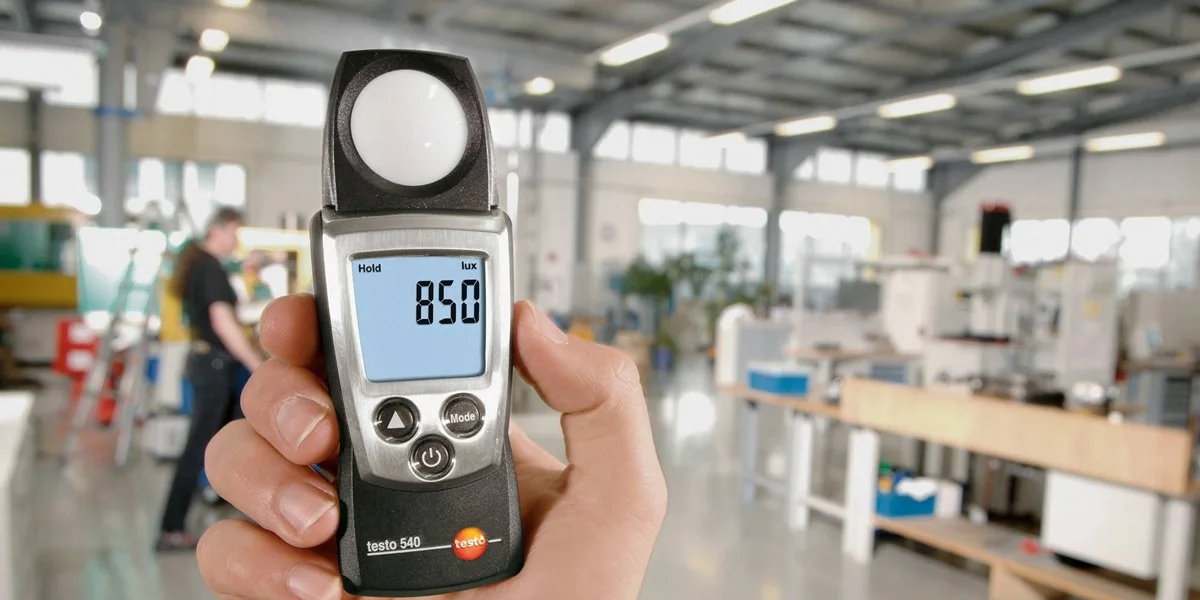
It can be seen that lux measurements are more closely aligned with daily life, making it convenient for users and designers to verify lighting effects in real-world scenarios, whereas lumen measurements rely more on professional methods and serve as an important basis for product performance testing and comparison. This difference once again highlights that while lux and lumens are closely related in concept, their roles in practical operation and application are entirely distinct.
Lux in Practical Applications: Recommended Illuminance Levels for Different Spaces
To truly understand the value of lux, it must be considered within the context of specific spaces and tasks. Different residential or work environments have varying requirements for illuminance levels.
While there are general recommendations for places like homes or restaurants, specific locations may require specific lux levels. For example, the following list shows the required illuminance values for locations with specific characteristics:
| Special Locations | Lux Value |
| Kitchen (Work Area) | 500–600 lx |
| Kitchen (General Area) | 200–300 lx |
| Bedroom (Headboard or Reading Area) | 500 lx |
| Bedroom (general area) | 100–200 lx |
| Children’s Room (Play Area) | 300 lx |
| Living Room (General Areas) | 200–300 lx |
| Living Room (TV Area) | 50 lx |
| Study/Reading Area | 500 lx |
| Bathroom (General Areas) | 200 lx |
| Bathroom (Mirror Areas) | 300–500 lx |
| Corridor (Hallways or Staircases) | 100–200 lx |
| Workshop | 150-500 lx |
| Office Desk | 500-750 lx |
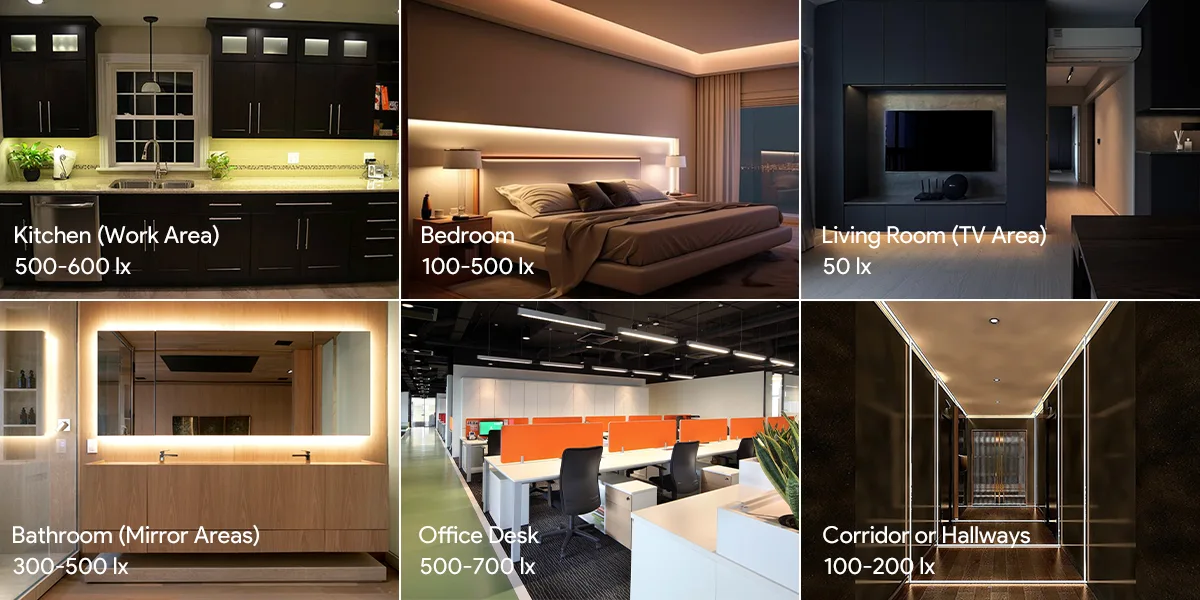
These values remind us that when selecting lighting fixtures, we cannot rely solely on lumens to determine suitability. Lumens indicate the amount of light output from the fixture itself, but whether it meets actual needs depends on calculating the required lux based on the space area and usage task.
For example, if the goal is to provide 500 lux of illumination for a 10-square-meter reading area, a total of approximately 5,000 lumens of light sources must be distributed across the area; however, if only a single 2,000-lumen light source is used, even if the parameters appear “bright,” the final effect may still be insufficient.
Therefore, lux provides a clearer usage guideline, while lumens provide the foundational data for selecting lighting fixtures. Combining both allows for the scientific and reasonable configuration of LED lighting systems, ensuring each space is both comfortable and efficient.
Summary
In the LED lighting field, lumens and lux are two concepts that are frequently mentioned yet often confused. As outlined earlier, lumens represent the overall output of a light source, serving as a metric for the potential brightness of a fixture; lux, on the other hand, measures the distribution of light on a specific surface or in a specific space, aligning more closely with our real-world experience during daily use. While the two concepts have distinct differences, they are also closely interconnected.
In practical applications, lumens are more suitable for comparing the output capabilities of different lighting fixtures, helping us quickly assess “how bright this light can be” when selecting products; lux, on the other hand, is directly linked to task lighting, determining factors such as reading comfort, kitchen safety, and clarity during makeup application in front of a mirror. Understanding this distinction can help us make more scientifically informed decisions when planning lighting.
More importantly, the quality of a lighting environment is never determined by a single numerical value. A truly reasonable lighting design must simultaneously consider the supply of lumens and the demand for lux, ensuring that light has sufficient output while being appropriately distributed to where it is needed. Only then can a space be both efficient, comfortable, and aligned with people’s usage habits.
Are you looking for high-quality LED lighting solutions? SignliteLED has over 14 years of professional experience, specializing in LED strip lights, LED sign tubes, LED linear lights, and LED tri-proof lights. We offer reliable, energy-efficient, customizable products to meet your personalized needs. Contact us today to explore our innovative lighting solutions and elevate your project.
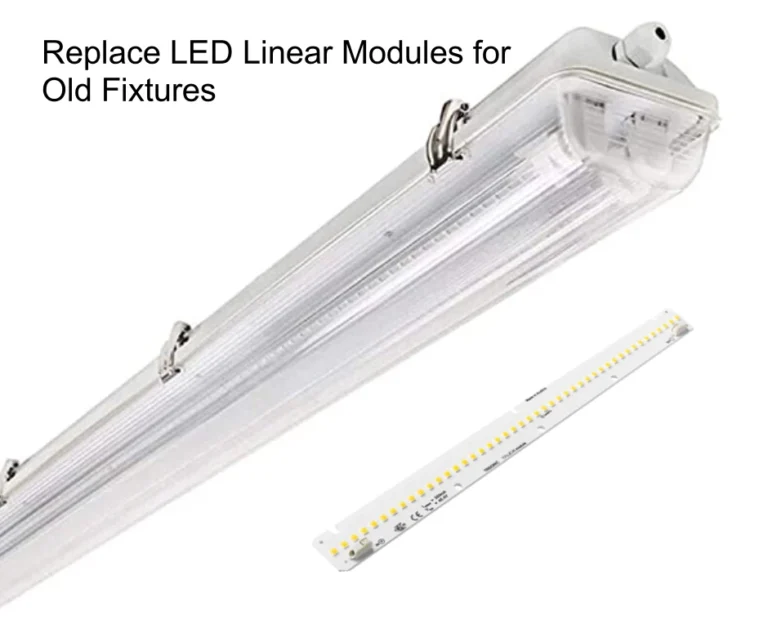
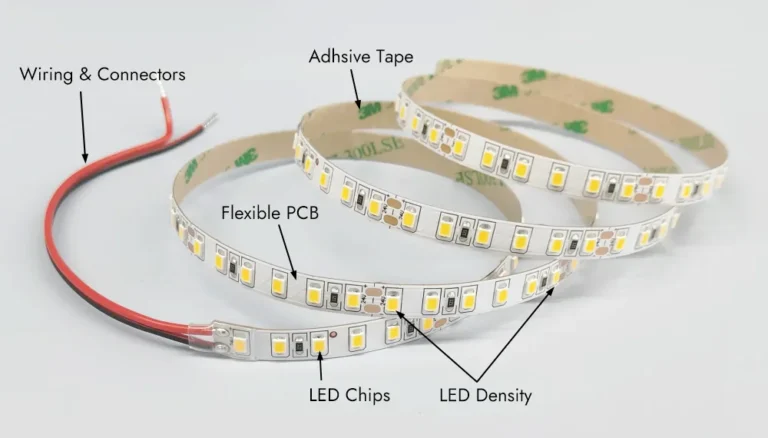
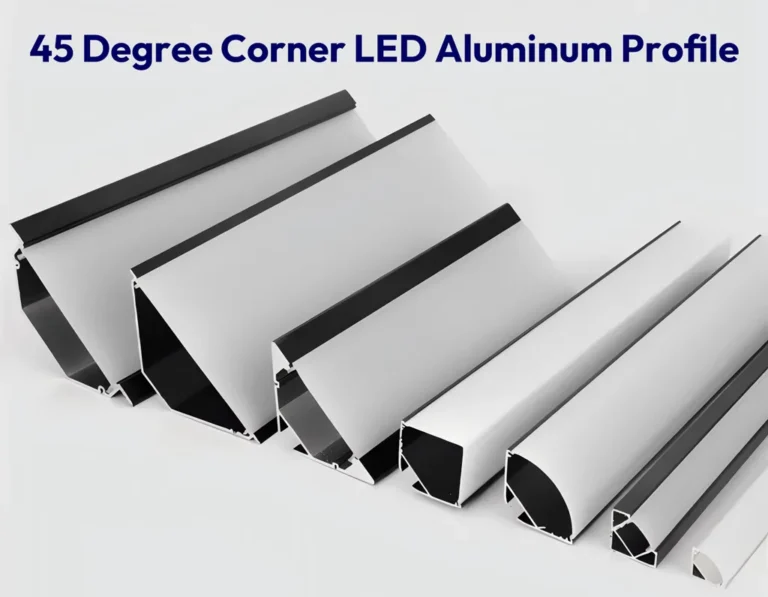
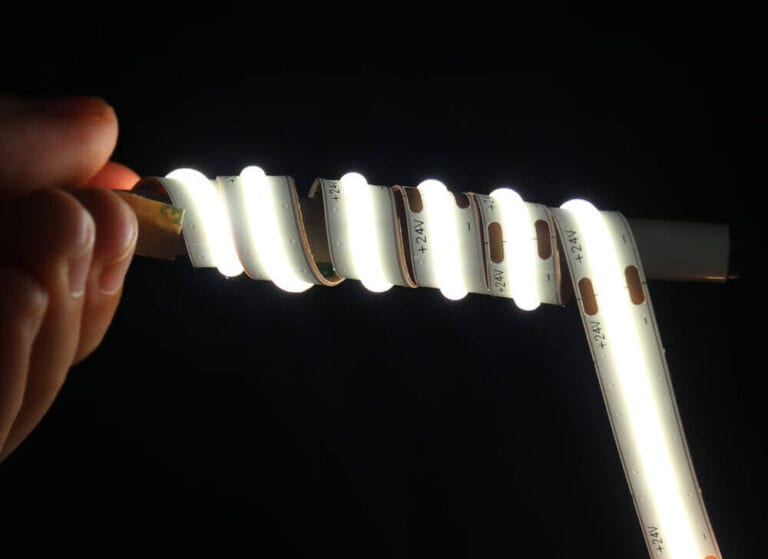

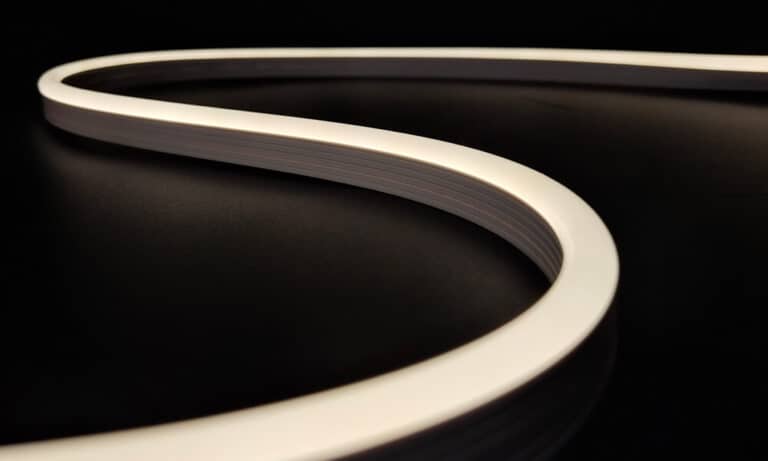

Your blog has become an indispensable resource for me. I’m always excited to see what new insights you have to offer. Thank you for consistently delivering top-notch content!
What i do not realize is in fact how you are no longer actually much more wellfavored than you might be right now Youre very intelligent You recognize thus considerably in relation to this topic made me in my view believe it from numerous numerous angles Its like men and women are not fascinated until it is one thing to do with Lady gaga Your own stuffs excellent All the time handle it up
I do believe all the ideas youve presented for your post They are really convincing and will certainly work Nonetheless the posts are too short for novices May just you please lengthen them a little from subsequent time Thanks for the post
Usually I do not read article on blogs however I would like to say that this writeup very compelled me to take a look at and do so Your writing taste has been amazed me Thanks quite nice post